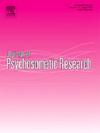Developmental timing sets the clock for self- injury: A retrospective cohort study on stress asymmetry in early-menarche and depressive disorder girls
IF 3.3
2区 医学
Q2 PSYCHIATRY
引用次数: 0
Abstract
Objective
To investigate the independent and interactive effects of menarche timing and stress exposure on non-suicidal self-injury (NSSI) in female depressive disorder adolescents, identifying risk factors and optimal intervention windows.
Method
106 female depressive disorder adolescents were stratified by menarche age (early:≤11 years, n = 32; normal:12–14 years, n = 74) and stress level (high/low). Generalized Linear Models and survival analysis compared NSSI incidence, onset age, and risk. Analyses were adjusted for potential confounders including body mass index (BMI) and depression severity.
Result
Early menarche independently increased NSSI risk HR = 4.68, and advanced the median self-injury age by 1.5 years. Critically, stress exhibited a selective, asymmetric effect: it significantly amplified NSSI risk exclusively in the early-menarche group, while showing no significant impact in the normal-menarche group. Survival curves further revealed distinct developmental risk windows, with the early-menarche group exhibiting a sharp increase in NSSI onset at age 12.0, compared to a later onset at 13.0 years in the normal-menarche group.
Conclusion
Menarche timing serves as a developmental clock for NSSI onset, while stress selectively exacerbates risk in early menarche individuals. The findings support the “development-environment mismatch” theory and suggest that early menarche females (≤11 years) should be prioritized for screening, with staged interventions tailored to developmental and stress profiles.
发育时间为自我伤害设定了时钟:一项关于初潮和抑郁症女孩压力不对称的回顾性队列研究
目的探讨月经初潮时间与应激暴露对女性抑郁症青少年非自杀性自伤行为的独立和交互影响,确定危险因素和最佳干预窗口。方法按初潮年龄(早期≤11岁,n = 32;正常12 ~ 14岁,n = 74)和应激水平(高/低)对106例女性抑郁症青少年进行分层。广义线性模型和生存分析比较了自伤发生率、发病年龄和风险。对包括体重指数(BMI)和抑郁严重程度在内的潜在混杂因素进行了分析调整。结果初潮早期独立增加自伤风险HR = 4.68,并使自伤年龄中位数提前1.5年。至关重要的是,应激表现出一种选择性的、不对称的效应:它只在初潮早期组显著增加自伤风险,而在初潮正常组没有显著影响。生存曲线进一步揭示了明显的发育风险窗口,初潮早期组在12.0岁时自伤发生率急剧上升,而初潮正常组在13.0岁时发病较晚。结论初潮时间是自伤发生的发育时钟,而应激可选择性地加剧初潮早期个体的自伤风险。研究结果支持“发育-环境不匹配”理论,并建议应优先筛查初潮早期(≤11岁)的女性,并根据发育和压力情况进行分阶段干预。
本文章由计算机程序翻译,如有差异,请以英文原文为准。
求助全文
约1分钟内获得全文
求助全文
来源期刊
CiteScore
7.40
自引率
6.40%
发文量
314
审稿时长
6.2 weeks
期刊介绍:
The Journal of Psychosomatic Research is a multidisciplinary research journal covering all aspects of the relationships between psychology and medicine. The scope is broad and ranges from basic human biological and psychological research to evaluations of treatment and services. Papers will normally be concerned with illness or patients rather than studies of healthy populations. Studies concerning special populations, such as the elderly and children and adolescents, are welcome. In addition to peer-reviewed original papers, the journal publishes editorials, reviews, and other papers related to the journal''s aims.

 求助内容:
求助内容: 应助结果提醒方式:
应助结果提醒方式:


